In today’s rapidly evolving music tech landscape, transforming traditional sheet music into digital scores (or vice versa) has become more efficient than ever thanks to artificial intelligence.
Whether you’re a composer, music teacher, or a passionate hobbyist, the ability to convert sheet music with the help of AI is a game changer.
In this post, we’ll break down the top “sheet to music AI” apps available in 2025, compare their features, and help you decide which one fits your needs.
If you’ve been wondering how AI is reshaping music transcription and notation, read on—you’re in the right place.
The Evolution of Sheet Music Transcription
For centuries, musicians painstakingly copied scores by hand. Over time, optical music recognition (OMR) software emerged to help digitize printed music.
However, traditional OMR solutions often struggled with accuracy—especially when dealing with complex, polyphonic pieces.
Fast forward to 2025, and AI-powered solutions are now rewriting the rulebook. Modern “sheet to music AI” apps not only convert physical or scanned sheet music into digital files but also generate sheet music from audio recordings.
These tools leverage deep learning to capture musical nuance, identify multiple instruments, and output files in standard formats like PDF, MIDI, and MusicXML.
What to Look for in a Sheet to Music AI App
Here are a few critical features to consider when choosing an AI-powered sheet music converter in 2025:
- Accuracy: The AI’s ability to correctly identify pitches, rhythms, and dynamics is paramount.
- Speed: Transcription should be completed within seconds or minutes.
- Ease of Use: A user-friendly interface minimizes the learning curve, allowing you to get started quickly.
- Editing & Export Options: Look for features that let you easily tweak transcriptions and export in multiple formats (PDF, MIDI, MusicXML, etc.).
- Multi-Instrument Support: An effective tool should handle both monophonic and polyphonic pieces.
- Cost & Flexibility: Consider pricing models (free, freemium, subscription) relative to your needs.
- Integration: Seamless integration with popular digital audio workstations (DAWs) or music notation software adds value.
Top “Sheet to Music AI” Apps in 2025
After thorough research and testing, we’ve narrowed down the best options for converting sheet music—or even audio recordings—into digital scores.
Here are our top contenders:
1. Klangio’s Suite of Transcription Apps
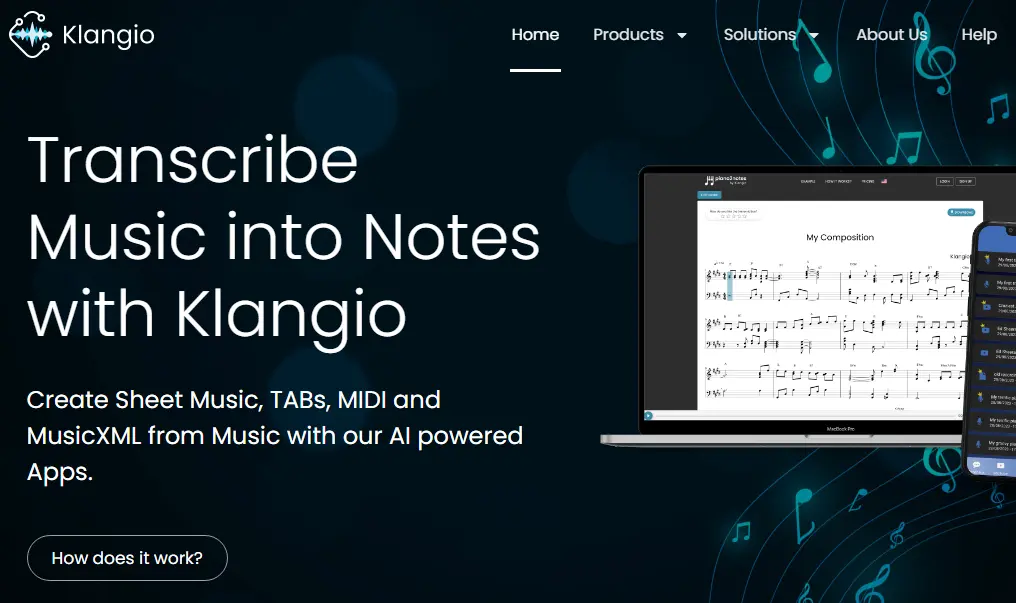
Klangio has become synonymous with high‑quality music transcription. Their suite of apps includes tools such as Piano2Notes, Drum2Notes, Sing2Notes, and Melody Scanner.
These applications are designed to transcribe audio recordings into sheet music quickly and with impressive accuracy.
Key Features:
- Multi-Instrument Transcription: Whether you’re working with piano, guitar, drums, or vocals, Klangio’s dedicated apps target each instrument’s unique challenges.
- Flexible Input Options: Upload audio files (MP3, WAV), record directly from your device, or even import YouTube links.
- Editing Tools: Easily review and edit the automatically generated notation right in your browser.
- Multiple Export Formats: Export your transcriptions as PDF sheet music, MIDI, or MusicXML for further editing in your favorite software.
- User-Friendly Workflow: With an intuitive drag-and-drop interface, you can have a demo transcription in seconds.
Pros:
- Excellent accuracy for solo instrument recordings.
- Versatile input options accommodate various recording sources.
- Robust export options for seamless integration into your music production workflow.
Cons:
- For more complex, polyphonic pieces, the transcription may require some manual fine-tuning.
- Premium features are locked behind a subscription.
Use Case:
Imagine you’re a piano teacher who needs to quickly convert student recordings into editable sheet music. Using Piano2Notes, you can have a rough transcription in seconds and then tweak it with the built-in editor—saving hours of manual work.
2. AnthemScore
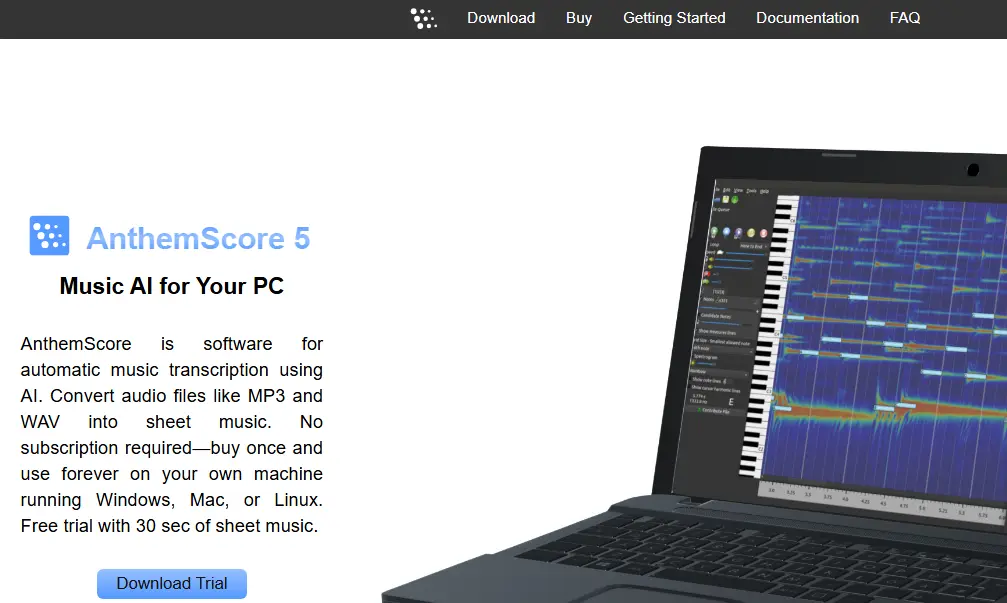
AnthemScore is another frontrunner in the realm of AI-powered music transcription. Built specifically to convert audio files into sheet music, AnthemScore leverages deep learning to accurately detect notes, beats, and even complex rhythms.
Key Features:
- Automatic Note Detection: Uses machine learning to pinpoint musical notes and dynamics from audio recordings.
- Advanced Editing Options: A comprehensive suite of tools allows you to adjust, add, or remove notes with ease.
- Playback Functionality: Listen to both the original audio and the generated MIDI file to verify accuracy.
- Multiple Export Formats: Save transcriptions as PDF, MIDI, MusicXML, or even GuitarPro files.
- Speed and Efficiency: Transcribe full songs quickly, making it ideal for both professional and casual use.
Pros:
- Particularly strong for monophonic and moderately polyphonic music.
- User-friendly interface with real-time feedback.
- One-time purchase option available for those who prefer not to subscribe.
Cons:
- May struggle with extremely complex polyphonic recordings.
- Some users have reported occasional glitches requiring manual correction.
Use Case:
A composer working on orchestral arrangements can use AnthemScore to quickly generate initial transcriptions from recordings.
While the tool handles the bulk of the work, you can then focus on refining the nuances—dramatically speeding up the composition process.
3. TopMediai AI Sheet Music Generator

For those who prefer a web-based solution, the TopMediai AI Sheet Music Generator is worth considering.
This tool converts piano recordings from YouTube or audio files directly into sheet music, offering a fast, cost-effective alternative to traditional transcription methods.
Key Features:
- Quick Transcription: Generate sheet music in minutes from YouTube links or uploaded audio files.
- High Accuracy: Claims an average accuracy rate of 97% for piano pieces.
- Cost-Effective: Transcriptions cost as little as €0.15 to €1, significantly cheaper than purchasing commercial sheet music.
- Comprehensive Output: Includes full sheet music with treble and bass clefs, tempo markings, and measures.
- Multiple Formats: Export files in PDF, MIDI, and MusicXML.
Pros:
- Extremely affordable, making it accessible for students and educators.
- Fast turnaround time—get your score in just a few minutes.
- Particularly optimized for piano pieces.
Cons:
- Currently focused on piano, with limited support for other instruments.
- As with all AI transcriptions, complex arrangements might need post‑processing adjustments.
Use Case:
A self-taught pianist looking for sheet music of their favorite songs on YouTube can use TopMediai’s generator to create accurate scores.
With low costs per transcription, it’s an ideal solution for hobbyists who want to experiment without breaking the bank.
Other Sheet to Music Ai (Alternatives)
4. ScoreCloud
ScoreCloud offers a unique approach by allowing you to record your performance and immediately see the corresponding sheet music.
It’s especially popular among composers who want to “capture” spontaneous musical ideas. However, its free version has limitations such as watermarks, and advanced features require a subscription.
5. Audiveris
For those interested in optical music recognition (OMR), Audiveris is an open‑source tool that converts scanned sheet music into MusicXML files.
Although it’s not designed for audio-to-sheet music conversion, it remains an excellent option for digitizing printed scores.
In-Depth Comparison and Use Cases
When selecting an AI tool for sheet music conversion, your ideal choice depends on your specific workflow and the complexity of your musical material. Let’s compare our top three picks side-by-side.
| Criteria | Klangio Suite | AnthemScore | TopMediai AI Sheet Music Generator |
|---|---|---|---|
| Best for | Solo recordings and simple instrument tracks | Monophonic to moderately polyphonic audio files | Piano-centric recordings |
| Accuracy | Excellent for monophonic and moderately polyphonic pieces | High accuracy with advanced editing features | Claims ~97% accuracy for piano pieces |
| Complexity Note | May require manual tweaking for complex scores | Some complex orchestral passages may need correction | Currently limited to piano only |
| Speed & Efficiency | Near-instant demo transcriptions for quick previews | Efficient full-song processing, ideal for professionals | Very fast; digital score ready in minutes |
| User Interface | Drag-and-drop, user-friendly with online editing | Clean interface with real-time audio playback | Simple web interface for fast piano transcription |
| Integration & Export | PDF, MIDI, MusicXML; integrates with DAWs and notation software | Multiple export formats; great for further editing | Exports high-quality piano scores in PDF, MIDI, and MusicXML |
| Cost | Free demo + subscription for premium features | One-time purchase option available | Very affordable per transcription—great for students and hobbyists |
Prefer visuals? Here’s a quick infographic you can share or save.
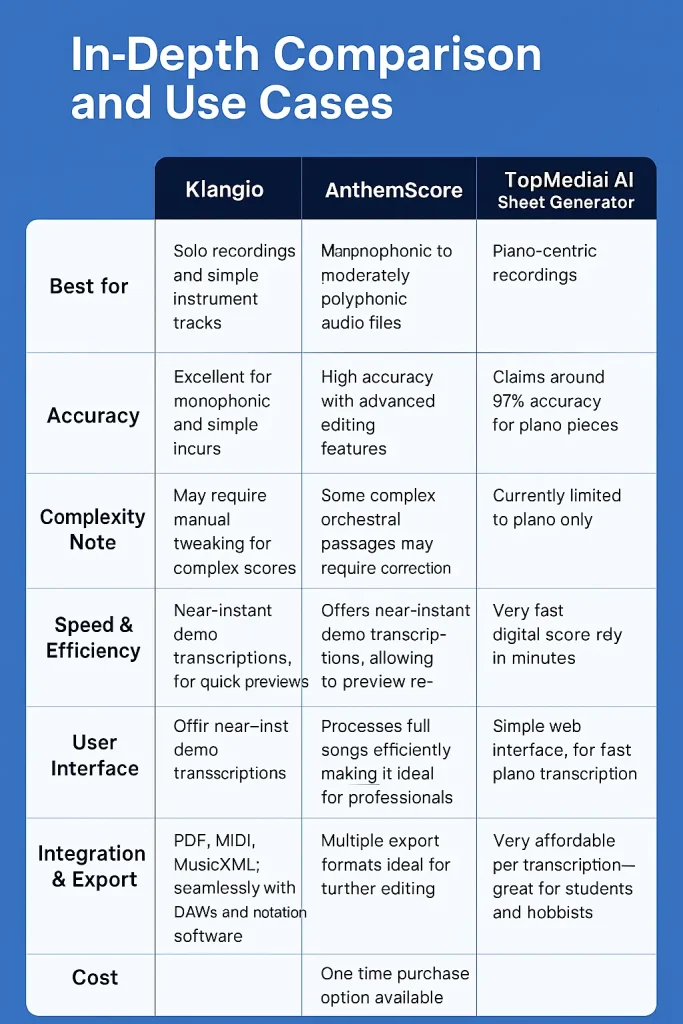
Pros and Cons of AI Sheet Music Conversion
Despite their many benefits, AI‑powered sheet music converters aren’t without limitations. Here’s a quick rundown of the main advantages and drawbacks:
Pros:
- Time Saver:
AI transcriptions can reduce hours of manual note‑by‑note transcription to mere minutes. - Cost-Effective:
Many apps offer low‑cost per transcription, making them accessible to a wide range of users. - Ease of Use:
User-friendly interfaces and online editors make these tools easy to learn and integrate into your workflow. - Multiple Output Formats:
Export your transcriptions in various formats to ensure compatibility with other music software. - Versatility:
Whether you need to transcribe a solo piano piece or an intricate vocal performance, there are tools available to match your needs.
Cons:
- Accuracy Issues: Complex polyphonic passages or recordings with background noise may require manual corrections.
- Limited Instrument Support: Some tools are optimized for specific instruments (like piano), limiting their use for other types of music.
- Learning Curve: Although designed to be user-friendly, fine‑tuning transcriptions to perfection may take some practice.
- Dependence on Audio Quality: The quality of the transcription is directly linked to the clarity of the input audio. Poor recordings can lead to inaccurate results.
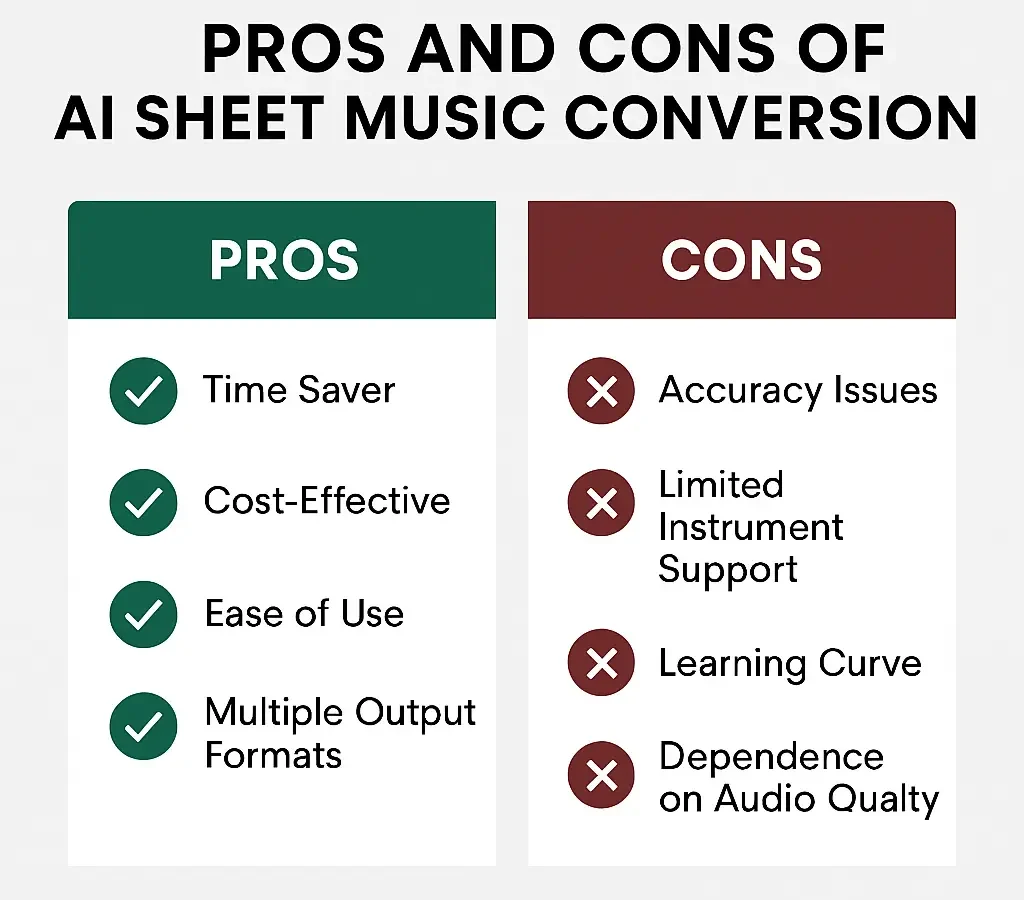
Final Verdict: Which App Is Worth It?
After evaluating the features, pros and cons, and use cases of the top “sheet to music AI” apps available in 2025, here’s our final take:
For Professional Musicians & Composers whose top priorities are accuracy and advanced editing features, we recommend AnthemScore. Its one‑time purchase option makes it an attractive long‑term investment for professionals who need reliable transcription for full compositions.
For Educators and Hobbyists, the Klangio Suite (with apps like Piano2Notes and Melody Scanner) offers incredible flexibility and user‑friendly interfaces that make it ideal for teaching and self‑learning.
For Budget‑Conscious Users Focused on Piano, TopMediai AI Sheet Music Generator is a phenomenal option if you’re primarily working with piano pieces.
With transcriptions costing as little as €0.15 to €1 and a claimed accuracy of 97%, it’s hard to beat for quick, affordable, high‑quality piano scores.
Ultimately, the best app for you will depend on your specific needs, the complexity of the music you work with, and your workflow preferences.
Each tool has its own strengths and weaknesses, so we recommend taking advantage of free demos or trial versions wherever possible before committing.
Conclusion
AI is revolutionizing the way we convert sheet music, making it faster, more accessible, and far more cost‑effective than ever before.
Whether you’re a professional composer needing precise, full‑song transcriptions, an educator looking to generate practice material on the fly, or a hobbyist eager to explore your musical ideas without breaking the bank, there’s an AI sheet music converter out there that fits your needs.
In 2025, our top recommendations are:
- AnthemScore for its professional‑grade accuracy and advanced editing features.
- Klangio’s Suite for its versatility and user‑friendly design, especially if you’re working with various instruments.
- TopMediai AI Sheet Music Generator for the best value and speed for piano transcriptions.
Take the time to explore these options and see which one aligns best with your creative process. The future of music transcription is here—and it’s powered by AI.
References
- klang.io (Klangio’s suite details)
- topmediai.com (TopMediai AI Sheet Music Generator overview)
- lunaverus.com (AnthemScore feature highlights)
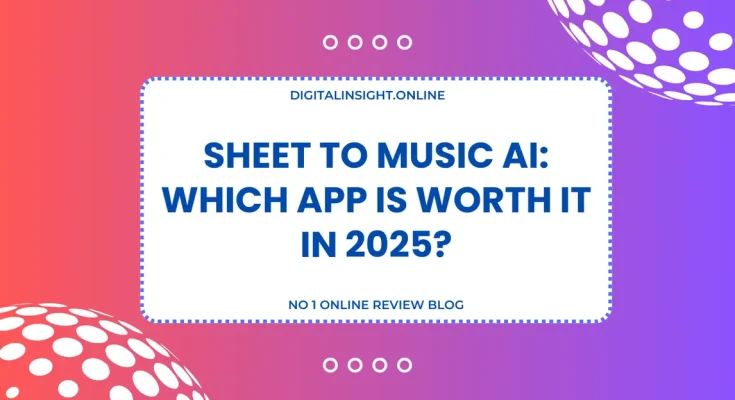
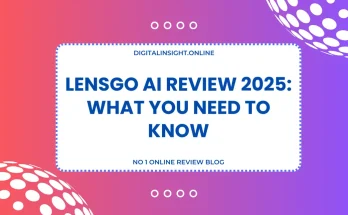
![Best AI Time Signature Detectors in 2025 [Ranked and Reviewed]](https://digitalinsight.online/wp-content/uploads/2025/04/Best-AI-Time-Signature-Detectors-in-2025-Ranked-and-Reviewed-348x215.webp)